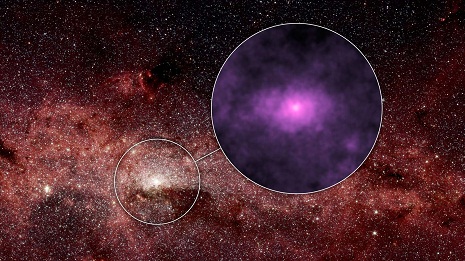NASA Finds

As for why this galaxy is so radiant, NASA explained the infrared light likely comes from a supermassive black hole.
“Supermassive black holes draw gas and matter into a disk around them, heating the disk to roaring temperatures of millions of degrees and blasting out high-energy, visible, ultraviolet, and X-ray light. The light is blocked by surrounding cocoons of dust. As the dust heats up, it radiates infrared light.”
The scientists conducting the survey are not sure how that black hole reached such a huge size, but according to their paper in Astrophysical Journal there are several theories.
One idea is that it was simply born big, as in the “seeds” for the black hole are bigger than researchers thought possible.
Other explanations revolve around ways the black hole could have broken or bent the “Eddington limit” for how fast it can consume material.
According to RT, the theory is that, as the black hole takes in material, it heats up to the point where it releases massive amounts of light, which then push away gas and other material, limiting the singularity’s meal.
Lead author of the NASA report, Chao-Wei Tsai, explained one of the ways this could be possible.
“Another way for a black hole to grow this big is for it to have gone on a sustained binge, consuming food faster than typically thought possible. This can happen if the black hole isn’t spinning that fast.”
Whatever the reason, the new objects are likely beautiful, although most can only be seen from Earth using infrared light detectors.
The light traveled 12.5 billion light years to reach us here, meaning that it’s a picture of the ancient past. The researchers explained that it’s incredibly rare to find such a large black hole that far out in the cosmos.
Nevertheless, the survey also turned up around 20 other ELIRGs.
Tsai explained that even though the galaxies are incredibly bright, many stayed hidden until now because of their distance and dust covering up their glow.
As previously reported by the Inquisitr, NASA has been doing plenty of more local research. The New Horizons spacecraft recently arrived near Pluto and has taken some photos of the dwarf planet and its moons.
From distant galaxies to distant planets, NASA appears to have plenty of work to do.















































